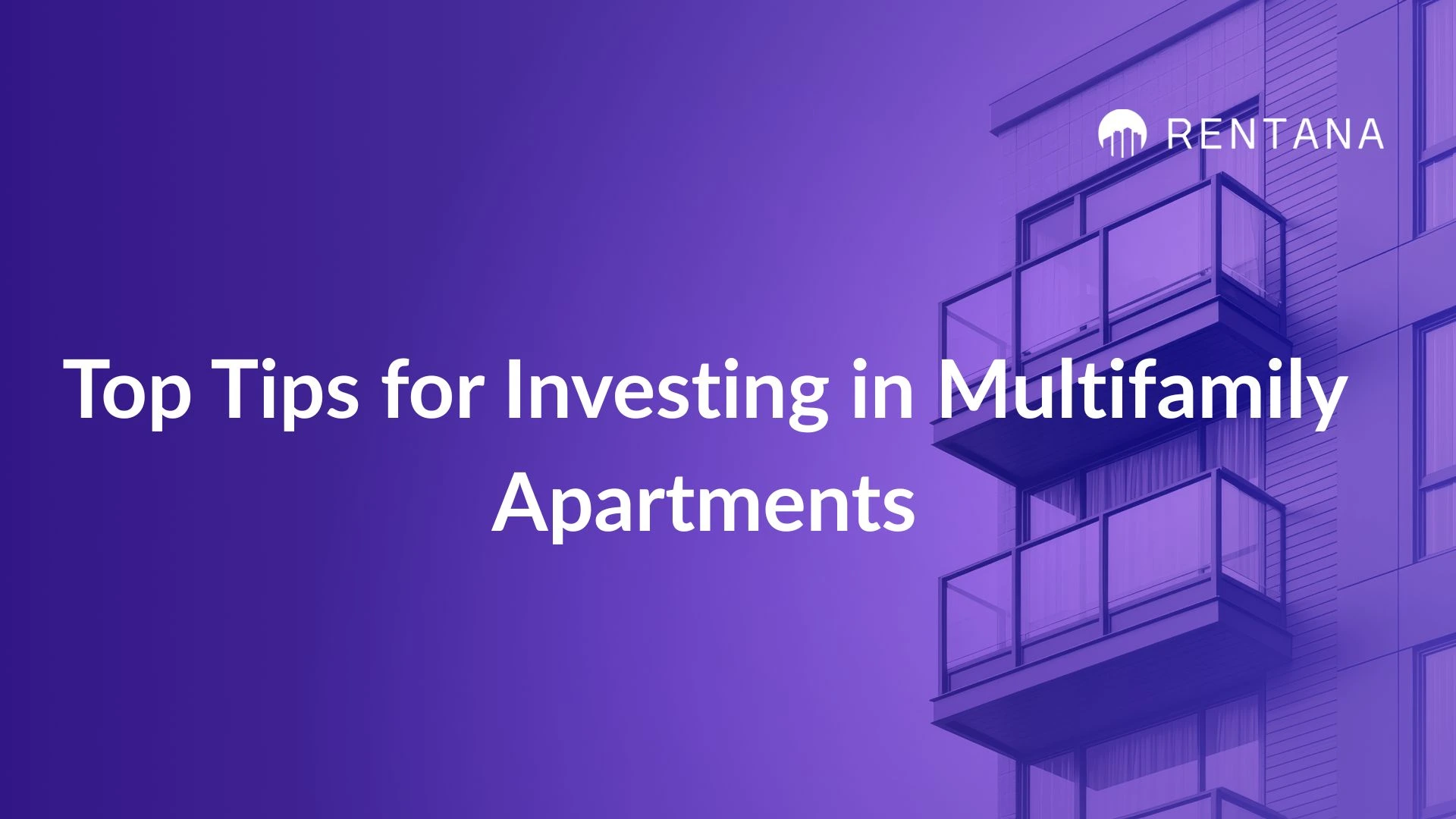




What if you could tap into a market where billions of dollars change hands every quarter, and where investors consistently earn strong returns? That market exists, and it’s called multifamily real estate. In Q1 2025 alone, the U.S. multifamily sector saw $30.0 billion in investment sales volume, a 35.5% jump from the same period a year before
Investing in multifamily apartments is a good approach to building wealth. The size and momentum of the market means plenty of room for new investors. Even if you start with a few units, you’re part of a force that shapes how people live. While big names move large portfolios, new investors can ride the same waves, if they understand how to see value, manage risks, and stay ahead of trends.
In this article, we’ll walk you through 9 practical tips for beginners who want to invest in multifamily apartments, so you can get in with confidence and build sustainable growth.
Recommended: How To Calculate the Value of a Multifamily Property Easily

Investing in multifamily apartments is one of the most reliable ways to build wealth in real estate. The biggest reason is steady cashflow. With multiple units under one roof, even if one or two are vacant, the others are still generating rent. This makes income more predictable compared to a single-family property, where one empty unit means no income at all.
Another advantage is scalability. Instead of buying ten separate houses, an investor can buy a ten-unit apartment building. Managing one roof, one set of utilities, and one location is often simpler than dealing with multiple single-family homes spread out across different neighborhoods.
Financing is often easier too. Lenders see multifamily properties as less risky because they produce income from many tenants at once. This makes banks more willing to offer favorable loan terms, especially for properties with five or more units.
In short, multifamily apartments offer consistent income, room to grow, and better financing opportunities, making them one of the smartest paths for both new and experienced investors.
Before investing in multifamily apartments, it is important to understand the basics. One of the first things new investors should learn is how the market works in their area. Rental demand, neighborhood growth, and local job opportunities all play a role in how successful a property can be. Spending time researching different markets helps you avoid costly mistakes later.
It is also helpful to understand the different classes of multifamily properties.
Related: 7 Best Asset Management Reporting Software for Multifamily
Class A apartments are the top tier. These properties are usually newer, located in prime areas, and filled with modern features like gyms, pools, or high-end finishes. Because they are in demand and in great condition, they also come with higher prices. Investors who buy Class A properties often focus on long-term appreciation rather than immediate high cashflow. For beginners, Class A can be attractive if you want a low-maintenance property, but the upfront cost may be harder to manage.
Class B apartments sit in the middle. They are often 10 to 20 years old, in good condition, and located in solid neighborhoods. They may not have the luxury finishes of Class A, but they still attract reliable tenants. Many investors like Class B properties because they offer a balance between affordability and steady returns. They usually require less upkeep than Class C but can deliver stronger cashflow than Class A.
Class C apartments are older buildings, often 30 years or more, and may need renovations or repairs. They are usually located in less desirable neighborhoods, but they also come with lower purchase prices.
For investors, Class C properties can provide high cashflow potential because of their lower costs and higher rental yields. The trade-off is that they often need more active management, and turnover rates can be higher. Beginners who are hands-on or willing to invest in improvements may find good opportunities here.
Finally, beginners should set clear, realistic goals before buying. Do you want steady monthly income, long-term appreciation, or both? Having a clear plan makes it easier to choose the right property and financing strategy.
Starting with smaller properties, like a duplex or fourplex, is often a smart way to gain experience before moving into larger apartment complexes.
Related: How to Analyze Multifamily Investment Opportunities

When you are just beginning, it can be tempting to dream about owning a large apartment complex right away. But the smarter move is often to start small with a duplex, triplex, or fourplex. These smaller properties are easier to manage and less risky if something goes wrong.
For example, with a fourplex, even if one unit is vacant, you still have three paying tenants to cover expenses.
At the same time, you gain experience in collecting rent, handling repairs, and understanding how cashflow works in real life. Starting small gives you a manageable learning curve while still letting you benefit from multiple income streams. Once you feel confident, you can scale up to larger buildings with more units and bigger returns.
Investing in multifamily apartments can be tricky if you can't analyze cashflow carefully.
Cashflow is the backbone of multifamily investing. Before you buy a property, you need to know exactly how much income it will generate after expenses. This means looking beyond rent and factoring in things like property taxes, insurance, maintenance, and vacancy rates.
For example, a building may look profitable at first glance, but if the roof needs replacing or the units stay vacant for long periods, your cashflow can disappear quickly. Running the numbers carefully ensures you know what to expect and helps you avoid costly surprises.
Successful real estate investors rarely do everything alone. Having a strong team makes the process smoother and less stressful. Your team might include a real estate agent who knows the local market, a property manager to handle tenants, a lender who understands multifamily financing, and a reliable contractor for repairs and upgrades.
With the right people on your side, you can make smarter decisions and solve problems faster. For beginners, this support system is often the difference between a profitable investment and a costly mistake.
One of the advantages of multifamily investing is that banks often see these properties as less risky because they generate income from multiple tenants. This makes financing easier to secure compared to single-family homes. But that doesn’t mean you should borrow more than you can handle.
The key is to use financing to your advantage without stretching too thin. Look for loan options designed for multifamily properties, compare interest rates, and plan for unexpected costs. Using financing wisely allows you to buy bigger and better properties while keeping your risk under control.
Read Also: How to Create A Lifetime Cashflow Through Multifamily Properties
Location is one of the biggest factors in a property’s success. Apartments in areas with strong job markets, good schools, and access to transportation tend to attract reliable tenants and maintain higher occupancy. Even a modest property in a growing neighborhood can outperform a newer building in a weak market. Before investing, study the local economy, renter demand, and neighborhood trends.
When investing in multifamily apartments, many beginners make the mistake of only focusing on rental income while underestimating expenses. Beyond property taxes and insurance, there are repairs, turnover costs, management fees, and even small items like landscaping and cleaning. It’s safer to overestimate expenses than to be caught off guard. A realistic expense forecast helps you maintain healthy cashflow and avoid financial stress.
Managing tenants and maintenance is a big responsibility. If you don’t have the time or experience, hiring a property manager can save you time and protect your investment. A good property manager will handle rent collection, repairs, and tenant communication, leaving you free to focus on strategy. While it does cost money, it often pays for itself by reducing turnover and keeping tenants satisfied.
Multifamily investing is not a get-rich-quick path. Building wealth takes time, steady management, and reinvestment of profits. It can be tempting to buy the biggest property you can finance, but starting at the right scale and growing step by step is usually smarter. Over time, the combination of cashflow, property appreciation, and debt paydown creates strong long-term returns.
One of the biggest mistakes beginners make when investing in multifamily apartments is using old tools.
Modern tools make multifamily investing easier than ever. Platforms like Rentana give investors clear insights into rent forecasts, market comparisons, and cashflow performance. Instead of juggling spreadsheets, you can see everything in one place and make decisions based on real data rather than guesswork.
For beginners, this is especially valuable because it reduces the chance of overlooking risks and helps you focus on strategies that actually work.
You Might Like: 25 Interesting Multifamily Housing Statistics You Didn't Know

Rentana is built specifically for multifamily real estate investors who want clarity and confidence in their decisions. It combines market data, portfolio performance, and AI forecasting into one easy-to-use platform. This makes it possible to evaluate properties quickly, understand their long-term potential, and manage them effectively once they’re in your portfolio.
For a beginner, Rentana acts like a guide. It gives you the same public market data and tools that larger investors use, but in a format that’s simple and actionable. Instead of being overwhelmed by numbers, you get clear insights that help you grow with confidence.
Don’t Miss: Is Multifamily Considered Commercial?
Multifamily investing can feel overwhelming at first, but it becomes much easier when you break it down into clear steps. Starting small, analyzing cashflow, building the right team, and staying realistic about expenses are all ways to avoid common mistakes. Over time, patience and smart management turn small investments into lasting wealth.
The biggest advantage beginners have today is access to technology that levels the playing field. Tools like Rentana take the guesswork out of investing by showing you where rents are headed, how your property compares to others, and what your real cashflow looks like.
With features like AI forecasting, market comparisons, and portfolio-wide reporting, Rentana gives you the same kind of intelligence that large firms use, but in a way that is simple enough for first-time investors.